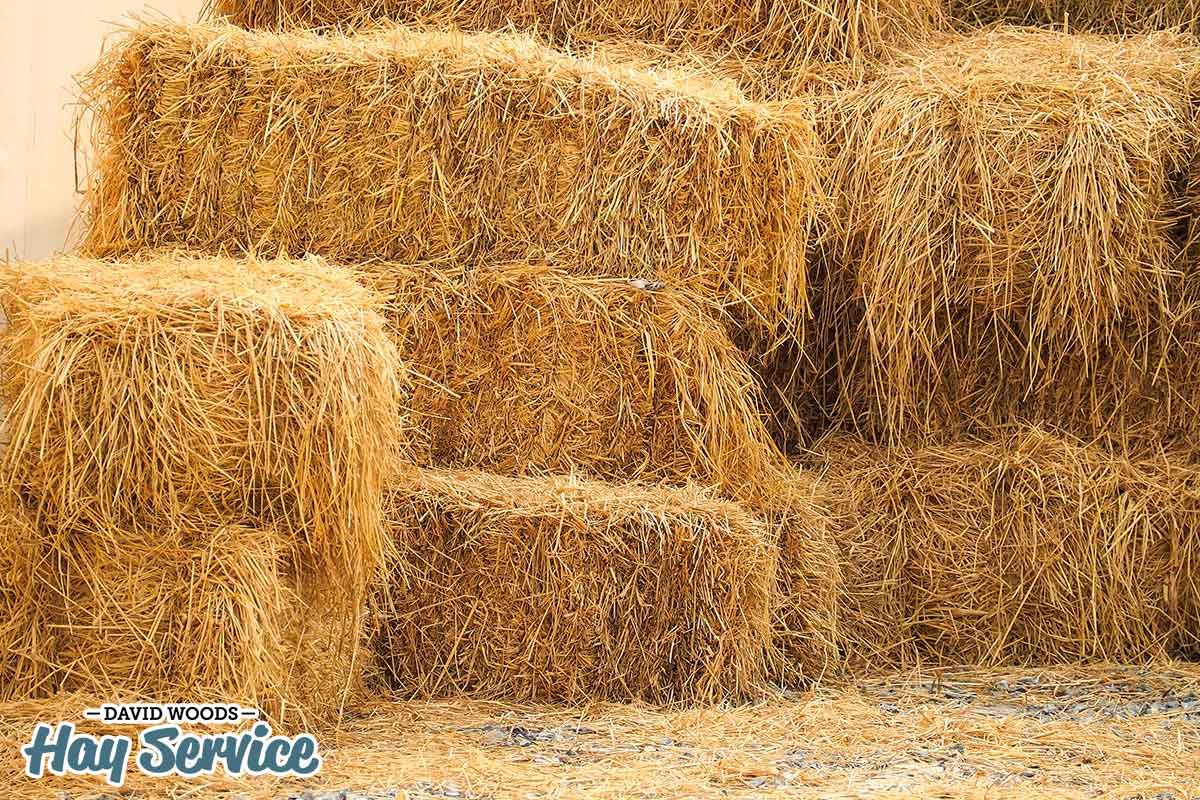
Hay is the common food for cattle, sheep, goats, and horses when pastures are scanty. Although all hay is not the same, it differs in quality, availability, and variety. Let David Woods Hay Service help you distinguish those differences!
When buying alfalfa hay, it is essential to inquire whether the hay is first, second or third cut and at what stage of growth it was harvested. Young alfalfa plants are digestible, palatable, and have a higher nutrient value. The overly mature plants are less leafy and thick-stemmed and with higher fiber content and less nutritional value. In addition, alfalfa is more drought resistant compared to clover hay.
There are three types of clover hay; purple, red, and white, named based on the flower color. The white clover is shorter with smaller leaves, while the red clover is taller with larger leaves. Clover also works as a fertilizer by adding nitrogen to the soil.
Hay quality is assessed based on the factors listed below.
Stage of Maturity at Harvest
The stage of maturity refers to the age at which the plant was harvested. Determining the stage of maturity in grasses and legumes is easy before harvesting. However, after cutting and baling, it gets complicated.
Alfalfa cut down at the bud stage has buds at the tip of the stems but lacks purple flower petals. Meanwhile, alfalfa cut at the bloom stage has purple flower petals and larger stems. In addition to bud and bloom, consider checking the stem size, texture, and the number of leaves.
Top-quality clover hay is one harvested at a 20% bloom stage. Clovers cut below reaching full bloom and not weathered while being cured have numerous blossoms depending on whether red, purple, or white clovers. Clovers with mature seeds, dark brown heads, and plump are fully mature.
Leafiness
To assess leafiness, look at the leaves-to-stem ratio. Leafiness is particularly important with clovers as they lose their leaves during curing and handling compared to alfalfa. Top quality feeds contain 60% total digestible nutrients (TDN), 70% protein, and 90% vitamins, all of which are on the leaves. In addition, the leafier hay contains more minerals and vitamins than less green hay.
Alfalfa hay has a leafiness of approximately 65%-70% and 10%-15% on the stemmy grass. In a bale of leafy alfalfa hay, the leaves cling to the stem and appear soft and pliable, while the less green bale appears very stemmy.
During harvesting, how you handle, cure, and store the hay affects the leafiness as the leaves shatter from the stem while raking and baling. In addition, the weather conditions during curing and baling influence the leafiness. So, hay is cut early, carefully handled, and cured to preserve leafiness.
Color
The desirable color of hay is bright green. The bright green color indicates the hay was well cured with no mold, rain, or overheating damage. The odor should be fresh with no hint of rot, must, or mildew. In addition, the color and smell of the hay influence the animals’ palatability and feed volume.
The color of the alfalfa and clover hay is affected by the following:
- Heating Damage: If the clover and alfalfa hay are brown, it indicates microbial heating damage. This is common when you bale hay without sufficient drying. Excessive heating lowers the hay’s protein, sugars, vitamin, and mineral content.
- Bleaching: When the alfalfa hay bleaches, it appears golden yellow. The yellowing indicates the hay was harvested when overly mature. In addition, sun bleaching reduces palatability and carotene content.
Nutrition
Hay contains sugars, starch, and fiber. For example, alfalfa hay has 92% more starch content than clover hay, while clover hay has a sugar level of 87% more than alfalfa. The implication of higher sugar levels is that it may cause rapid fermentation. This means that it’s difficult to maintain the sugar levels without using a wide-swath, same-day haylage which speeds up drying and preserves the nutrients.
With all the above considerations, alfalfa hay is more nutritious, drought resistant, and readily available. To make your order of premium alfalfa hay bales or seeds, or for more information about pricing and delivery, reach out to David Woods Hay Service today at (620) 285-5030. You can also contact us online, and one of our hay experts will get back to you ASAP.
